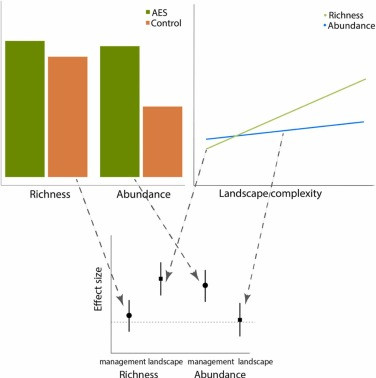A recently published article reviews the effects of land use heterogeneity on arthropod species richness through meta-analysis.
The authors of “Increasing landscape complexity enhances species richness of farmland arthropods, agri-environment schemes also abundance – A meta-analysis”, amongst whom SHOWCASE partner Péter Batáry, analysed 29 studies that measured the effects of agri-environment systems and landscape complexity on arthropod abundance and diversity. Moreover, they distinguished between vegetation-dwelling and ground-dwelling species, as the impacts were thought to be stronger in the more mobile vegetation-dwelling taxa.
According to the findings, increasing landscape complexity enhanced arthropod variety but not quantity. Furthermore, agri-environment plans aided not only the abundance of arthropods, but also the diversity of their species.
In conclusion, agri-environment schemes in Europe benefit both arthropod abundance and species richness, whereas increasing landscape complexity primarily enhances species richness. This is why both local and landscape management need to be taken into account to halt current biodiversity losses in agricultural landscapes.
You can read the full paper here.
Photo: The study question illustrated graphically. It tested whether increasing the landscape complexity enhances only arthropod richness, and local AES management only arthropod abundance, in cropland. The expected results are illustrated. Agri-environment schemes are referred to here as AES vs. control (conventional cropland management).
